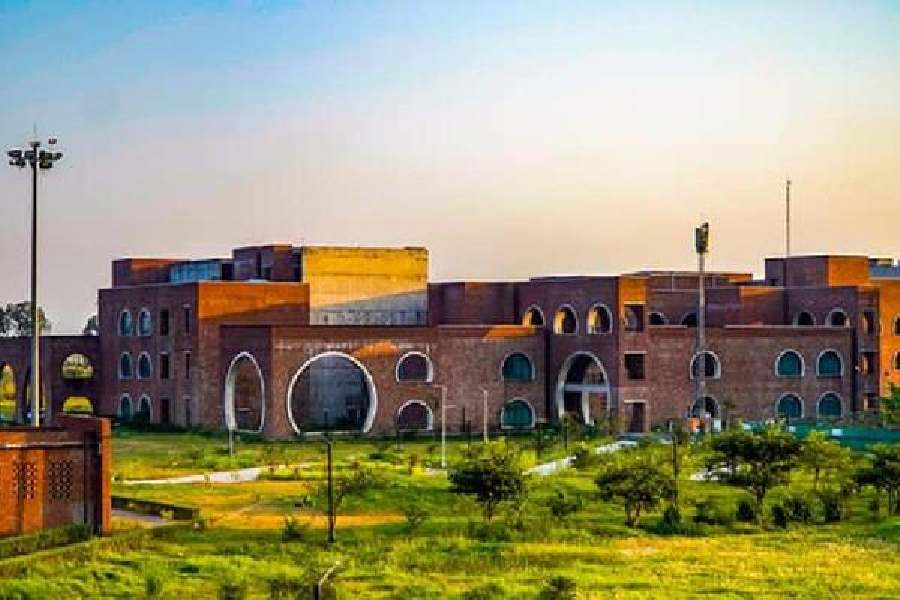 |
.jpg) |
| (Top) Gangua river reduced to a small stream-like structure due to encroachment and (above) heaps of red soil deposited on the bed of the nullah in Bhubaneswar. Telegraph pictures |
Bhubaneswar, April 6: The capital has witnessed a real estate boom in the last few years. However, this interest in real estate has also led to an alarming rise in the number of cases of land grabbing.
Residents of Brahmeswar Bagh locality here have claimed that a realtor group is eyeing the Gangua nullah — an important water body — as they want to block its flow in the Brahmeswar Patna area and reclaim the land for sale.
Authorities of the Bhubaneswar Municipal Corporation (BMC) have already taken note of the development and inspected the site.
The Gangua nullah acts as a natural sewerage treatment plant for the city. Nine out of 10 natural drainage channels flowing through the city meet the ‘nullah’ at various points.
“We can act only when we find that houses are being constructed on the basin of the water body. If we find people buying land at the reclaimed areas of Gangua, we won’t allow houses to be built there,” said Deoranjan Kumar Singh, vice-chairman, Bhubaneswar Development Authority (BDA).
However, residents of Brahmeswar Bagh said houses were indeed being constructed on the reclaimed land, violating all norms.
“The width of the water body in the comprehensive development plan is 114 metres. But it is hardly a 14 metre wide patch here,” said one of them.
Vishal Kumar Dev, BMC commissioner, said: “We have written a letter to the commissioner-cum-secretary, water resources department, as we have received complaints regarding sale of land and construction of houses along Gangua basin. The Gangua nullah comes under the management of lower Mahanadi basin and they have to take immediate action.”
Baidhar Panda, chief engineer, lower Mahanadi basin, said: “The executive engineer concerned has been asked to make a field visit. We will take action soon to free the nullah from encroachment.”
Nabakishore Mahalik, retired professor of Geology, Utkal University, said: “Apart from providing a cooling effect to the city, water bodies like Gangua help in recharging the ground water table. So, a sewerage system to free the Gangua from pollution should have been in place by now. However, as it has not yet been done, the basin of the water body should remain clean and free of encroachment.”
Bijay Kumar Rath, former superintendent, state archaeology, said: “Gangua was the moat around the historic Sisupalgarh fort. Known as Gandhabati in the ancient times, the transformation of the beautiful moat to a waste water nullah has become a shame for the city.”
According to a scientific study, the 35.7 km Gangua nullah discharges approximately 652 cusecs of water into Daya river.










